HYPER-MEME Part 1: Process and Reflections
me when I have 3 weeks turnaround to put together an exhibition

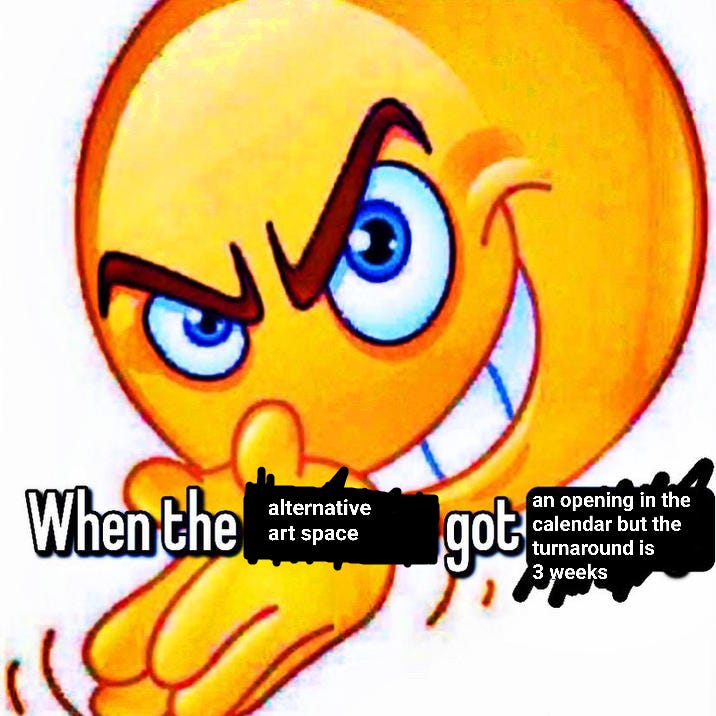
Hyper-meme was a group show I curated with artists Ash Hagerstrand, Tong Wang, Xianglong Li, Victoria Reshetnikov, and some of my cat meme art at Bushwick project space Living Skin. This whole project kind of tumbled together real fast (and in the middle of my gotdamn breakup, love that for me), based on a couple of things happening. I met the Living Skin directors through a mutual artist contact, Jun, whom I had connected with through an artist I had previously worked with in Seoul, Seungwoo, whom I had initially contacted on instagram. So note to all you artists: I know instagram fucking sucks for a lot of reasons, but as a curator, it makes my life a lot easier having a platform to see your work, to message you directly about projects, and eventually, to send you shitposts. My inbox and my profile are two very very different animals. But also, if there’s another platform to migrate to, I am all ears.
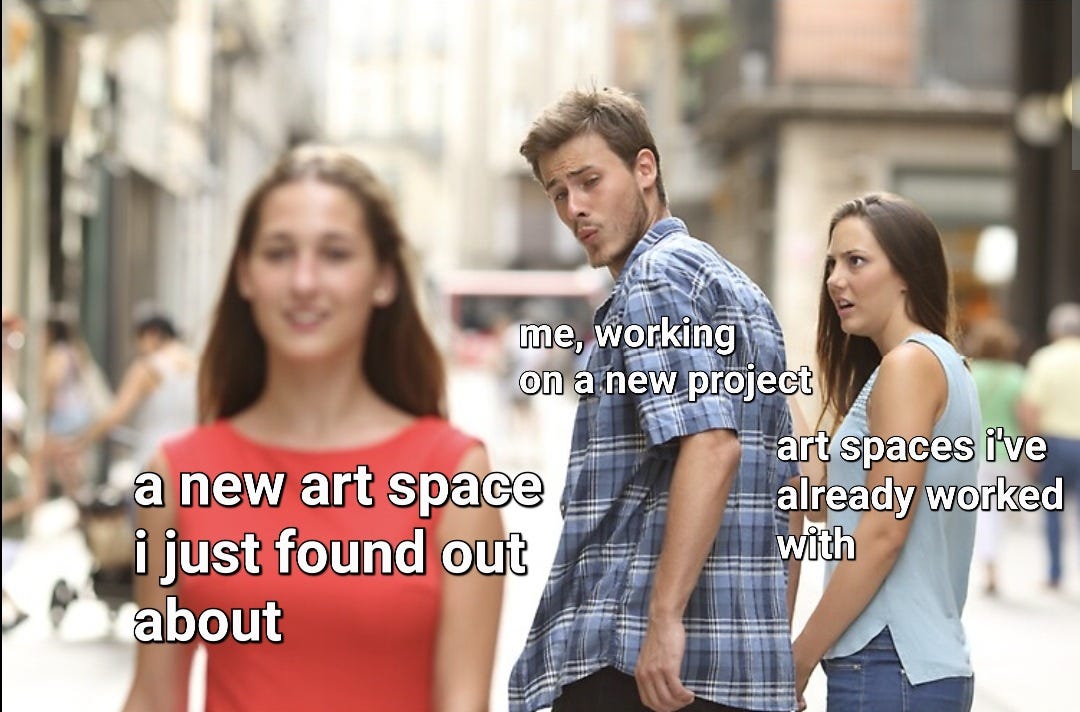
Jun texted me on New Year’s about doing a studio visit with him, when I had, in all honesty, already been considering his work for another project, so I was more than happy to oblige. It was during that studio visit that he insisted on me first meeting Austin to tell me about Living Skin. We exchanged contacts and agreed to meet later to tentatively discuss some projects. When that meeting came though, Austin mentioned he had an opening in the calendar (3 weeks from that point) to do a show if I was possibly interested… I mean like fuck, I’m not gonna say no to that. So we spitballed some ideas for a while, and in the context of artists with whom I’m frequently in touch with, more or less decided on a rough concept, and an artist list.
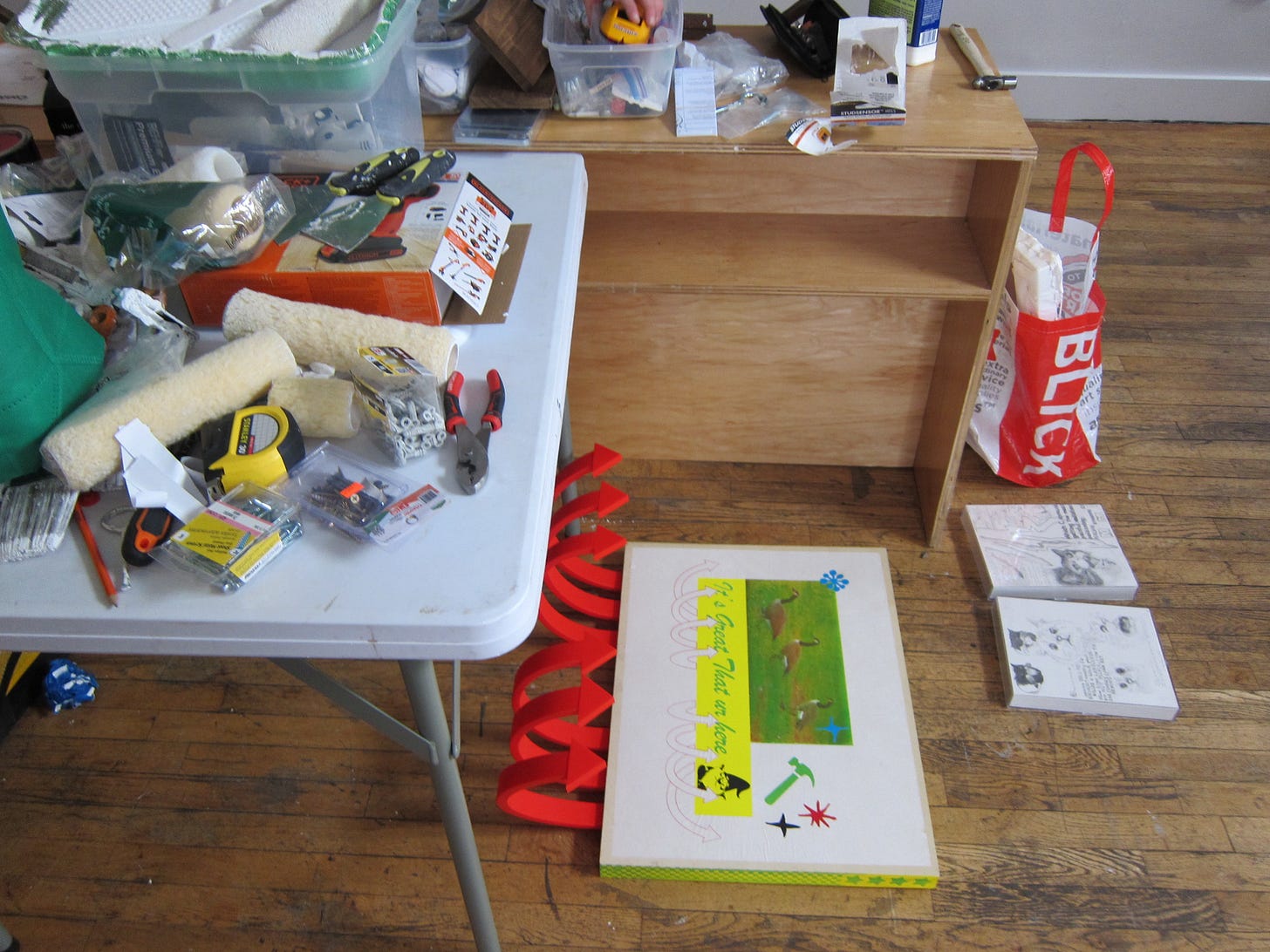
Something else that also happened was a serendipitous studio visit with Avatar Lilith. We had been tentatively planning a visit since last April, but like shit happens. I wasn’t able to commit to it, she wasn’t able to commit to it, and due to some other dumb bullshit, I sort of took an indefinite hiatus from the art/tech communities here who were already more than happy to ostracise me for my traditional printmaking background lol (too analog I guess). In December, she did follow up with me, and we did our studio visit in which she first introduced me to the Office of Applied Strategy’s Dossier 1: Hyper-optimization; Creative Stagnation Amidst Cultural Abundance. During that visit, it came out that our community values were extremely aligned, and we talked about everything from her experimental radio practice, community collaborative projects, de-growth, and the future of her avatar practice. It’s also worth mentioning that Lilith is literally one of the coolest and kindest people/artists I’ve ever met in my life, so it was really personally significant she was down for a visit, because I went into it not exactly sure about what I had to offer her.
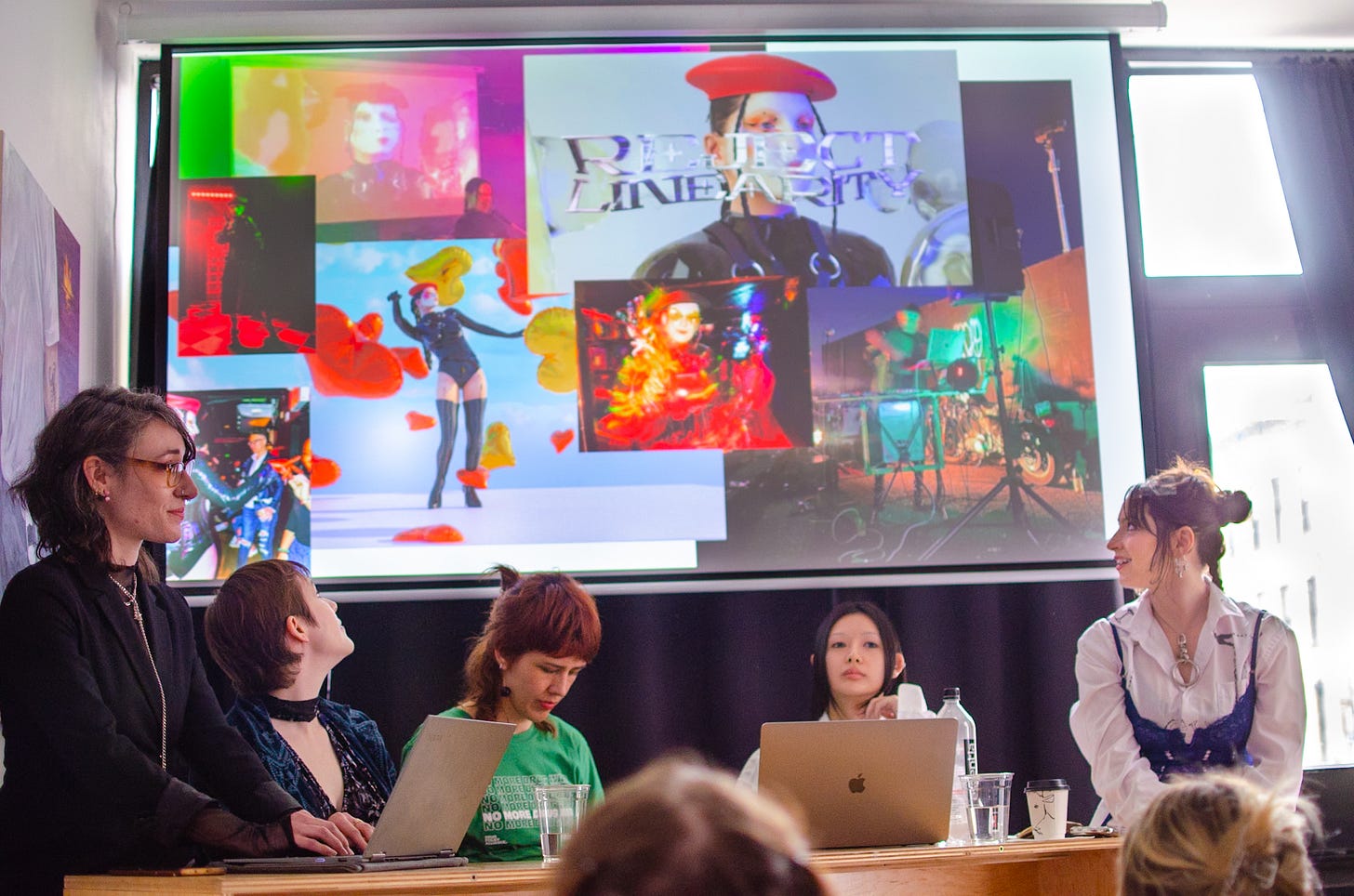
I had annotated the introduction twice by the time I met up with Austin to talk plans, so it was kind of tumbling around in my mind as far as a concept. I was particularly stuck on the idea of how, due to our relationship to the internet through apps and their content algorithms, creators were forced to kowtow their content to the algorithm in order to assure the largest reach, but in doing so, sacrificing more organic forms of content creation that would otherwise be stifled. I was also reflecting on my own relationship to online performativity and content curation, which had been the base for a particular body of work I was focused on around 2015, where I “performed” as the idea of a net artist on tumblr as a means of activating different ideas of selfhood and identity.

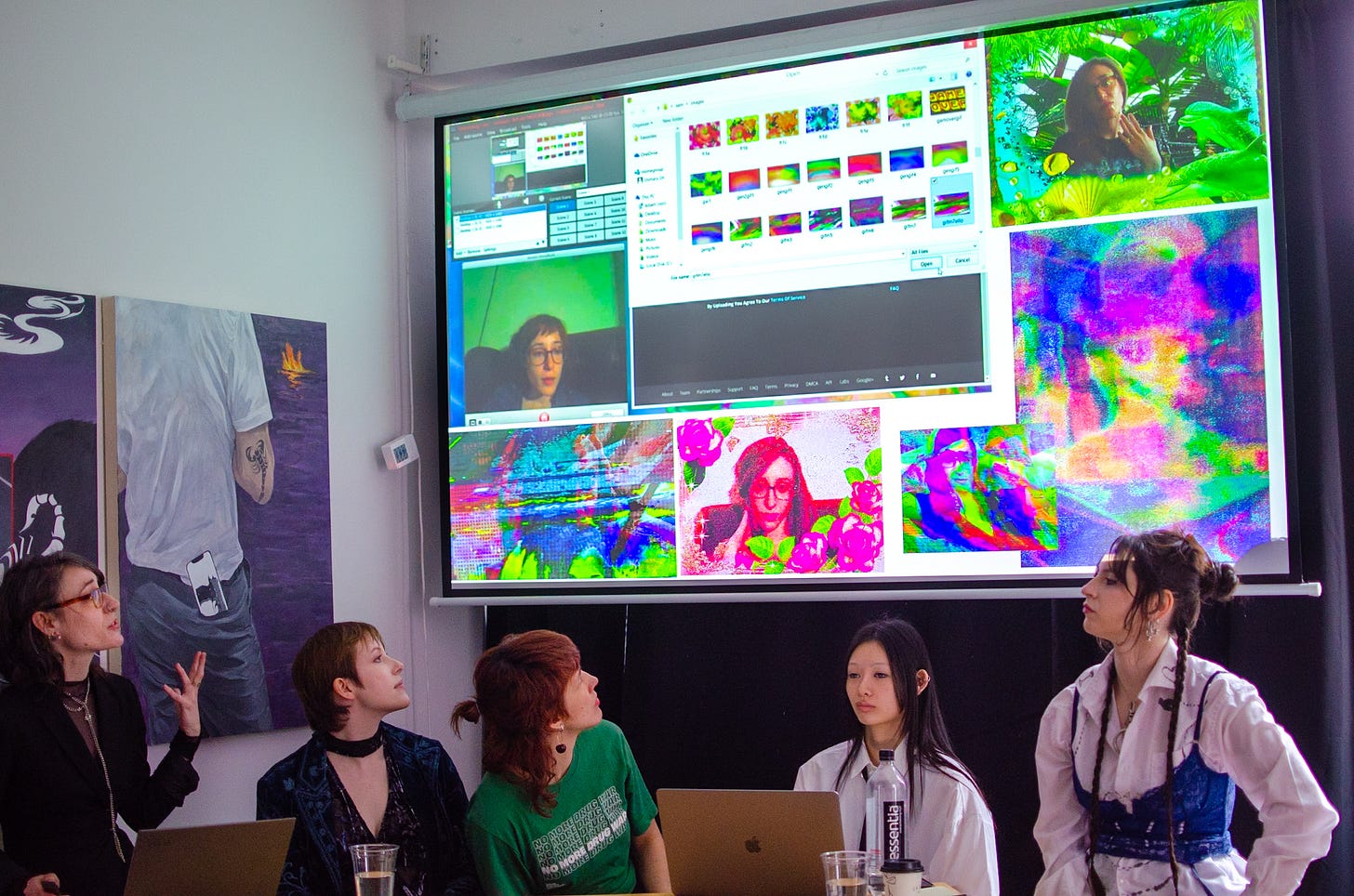
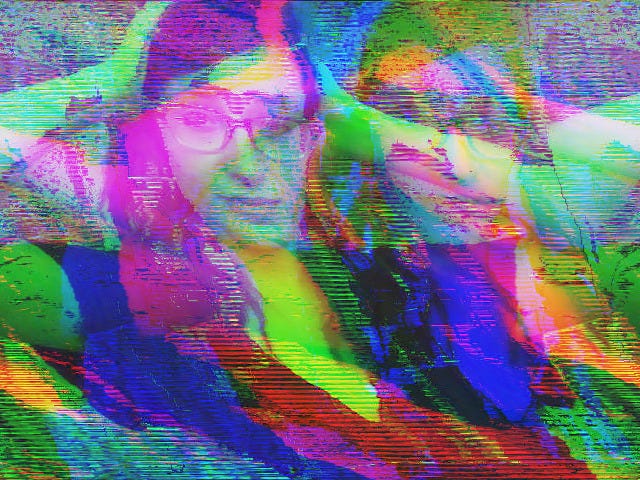
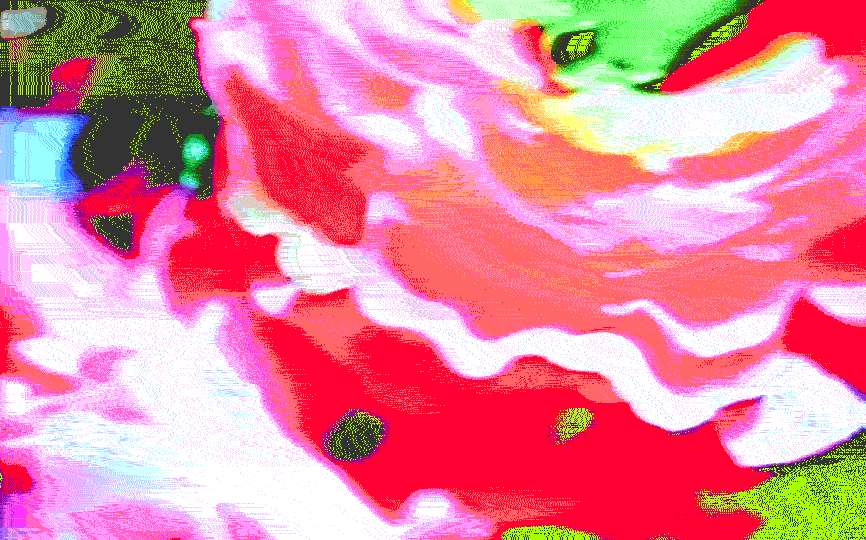
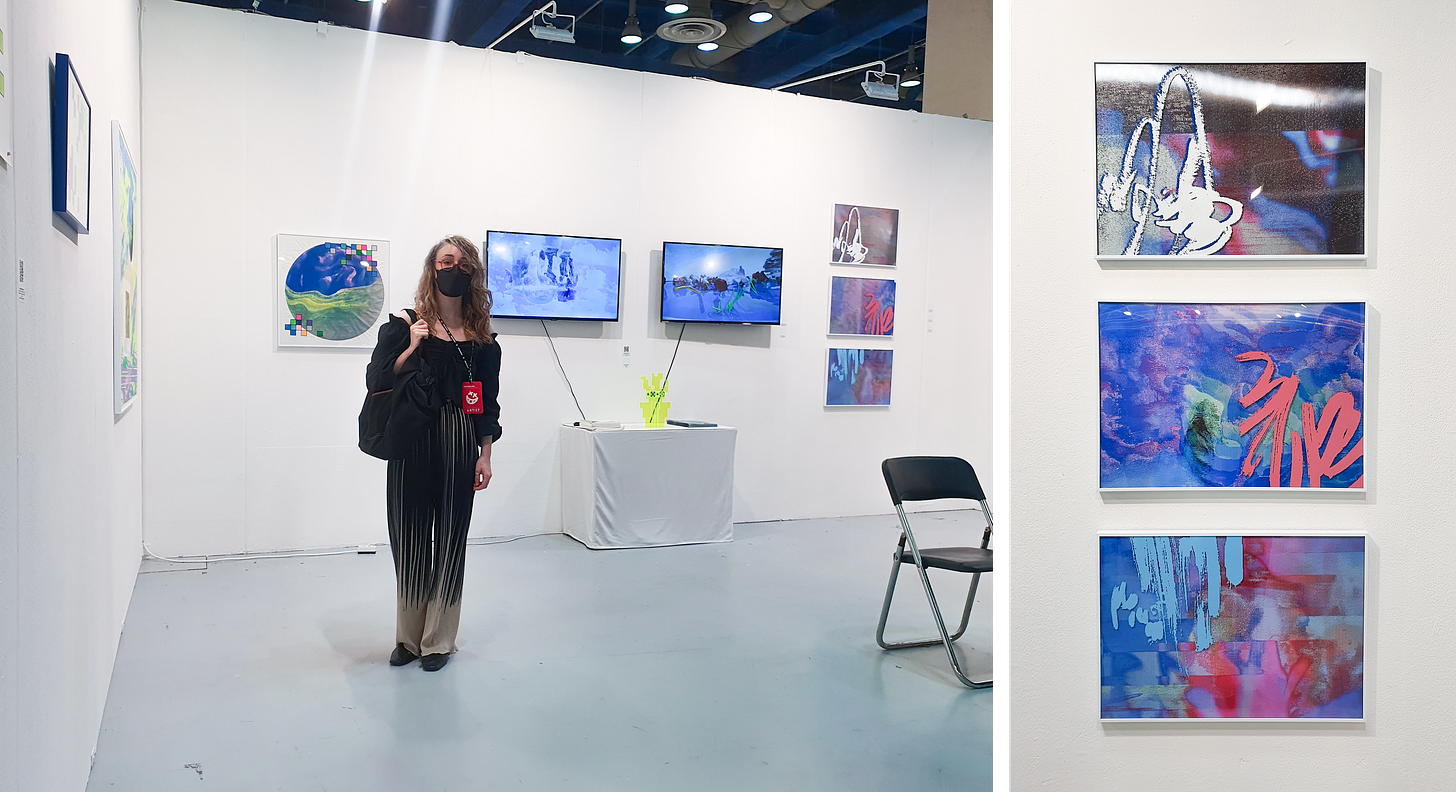
As you might have also realized by reading my substack primer, memes are also pretty important to me. They are a focus of my research and a foundational part of my personal artistic practice (at the moment anyway), but they’re also how I communicate visually online, and are also one of my love languages ❤️. I curate content for friend/lovers based on our relationship, inside jokes, and how much I want to piss them off. Hate sonic the hedgehog vore? That’s exactly what your ass is getting. Vegetarian? Enjoy 20,000 glizzy memes. Are we dating? Okay cringey couples content for you it is. I also have several individual and group chats specifically for cat memes as a matter of principle. Not just for fun though; I utilize memes as an everyday digital vernacular, so there are times when I feel I can communicate most effectively by making something for the chat.
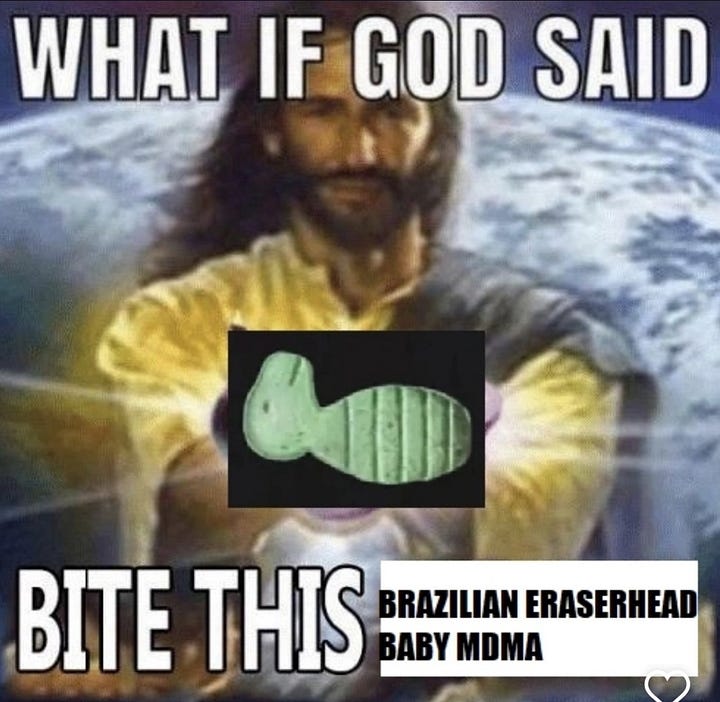
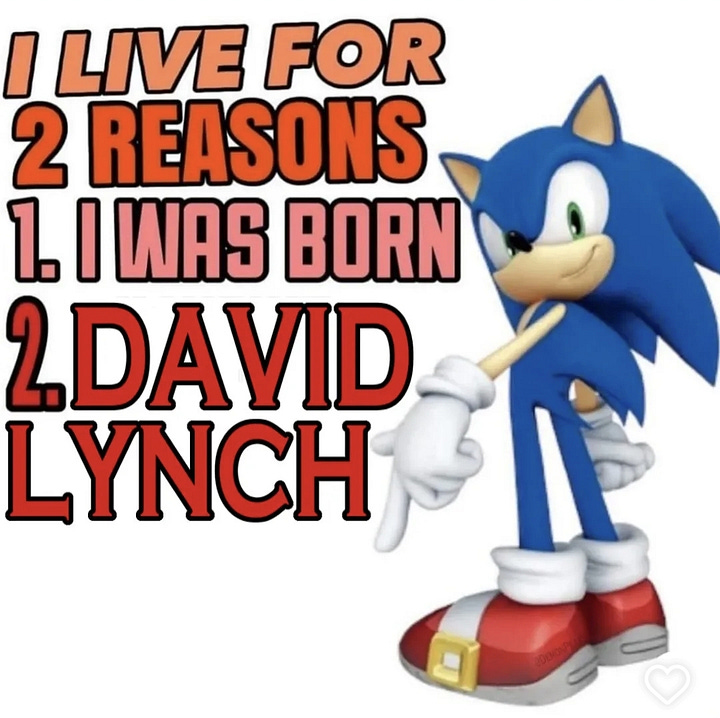
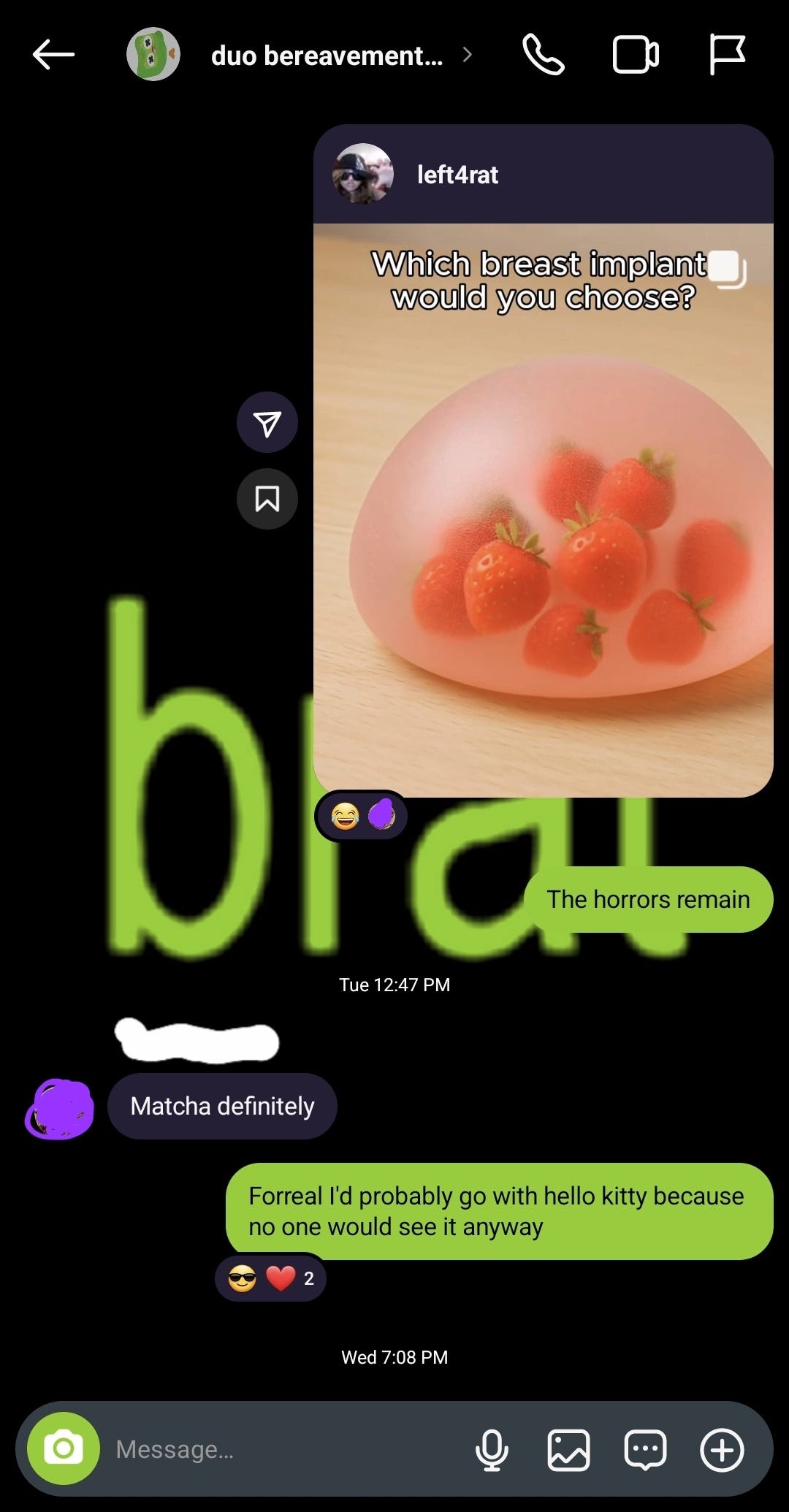
Something I brought up in my curatorial walkthrough was considering Richard Dawkins’ definition of a “meme” as a “packet of cultural information” (he’s problematic, I know, but we’ll cancel him later). To that end, it’s not just image macros like my profile pic here that qualify as memes, it’s anything from a screenshot of a tweet or a news headline, to anything that would be a visual/cultural reference too (so macrocultural web aesthetics would qualify, and this is just as far as online content is concerned). Again, I’m going to be annoying AF and cite Steyerl, because the reality is, due to algorithmic flattening (that content is built to serve the algorithm and not the other way around), it probably doesn’t surprise anyone that certain types of memes and formats would disseminate better than others. Something I return to a lot is how memes represent a kind of global visual vernacular that transcends culture, nationality, and linguistics. It doesn’t frankly matter what the macro text says, you can understand it contextually from the nuance of the image itself. Admittedly, though, we’re at a point where much of “meme culture” (if you’d call it that) is self-referential and is at about 5-6 layers of irony depending on the references. So while I don’t have to do much explaining of a screenshot of a greentext (although it would obviously help), some memes become indecipherable if you’re not privy to the hyper-historicity of the references, the concept of which is its own fucking meme template.
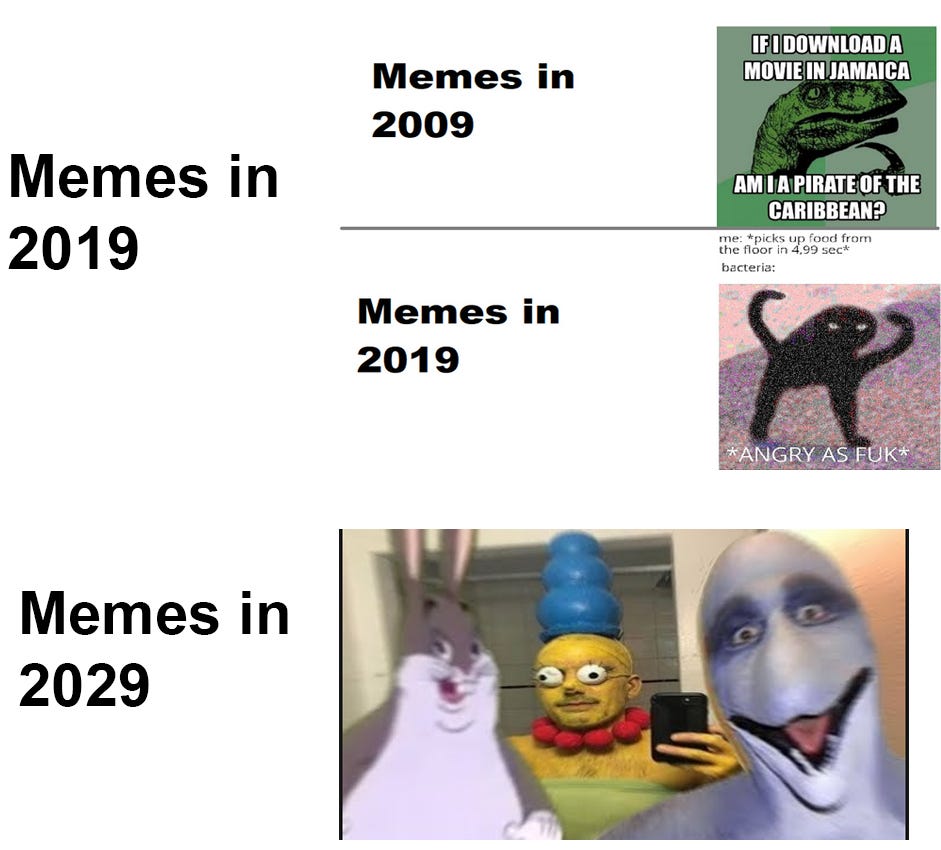
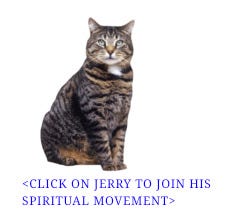
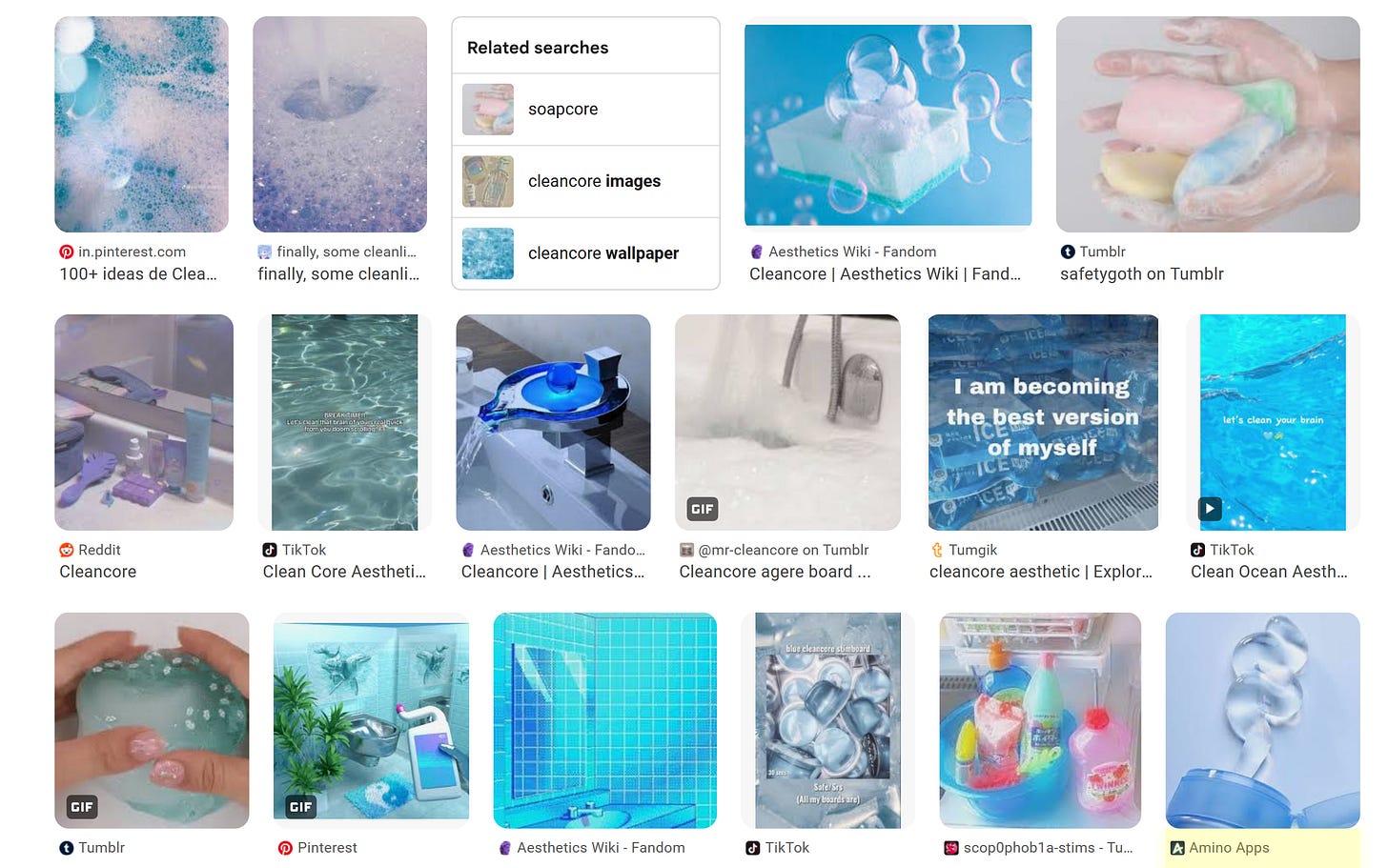
All of the artists in this exhibition, except for Ash, were artists I had already done multiple studio visits with and was familiar with their post-internet practice, and had been planning another show around a few of them, considering our relationship to the screen as a metaphor for “seeing the world” based on Eye and Brain by R.L. Gregory. That show didn’t happen for a lot of reasons, but because those artists and I had been so recently in touch, it wasn’t complicated to involve them, although I am extremely grateful they were down and flexible. Ash had previously exhibited in Tong and Li’s artspace A Space, one stop away on the L, but was still a bit of a shot in the dark because we hadn’t met personally. Thankfully, they were also super down. So now I have a confirmed roster of artists one week into planning, meaning it was just a question of working out the logistics of installation and some rough ideas around programming to work on with the space directors. Programming did take ages, though.
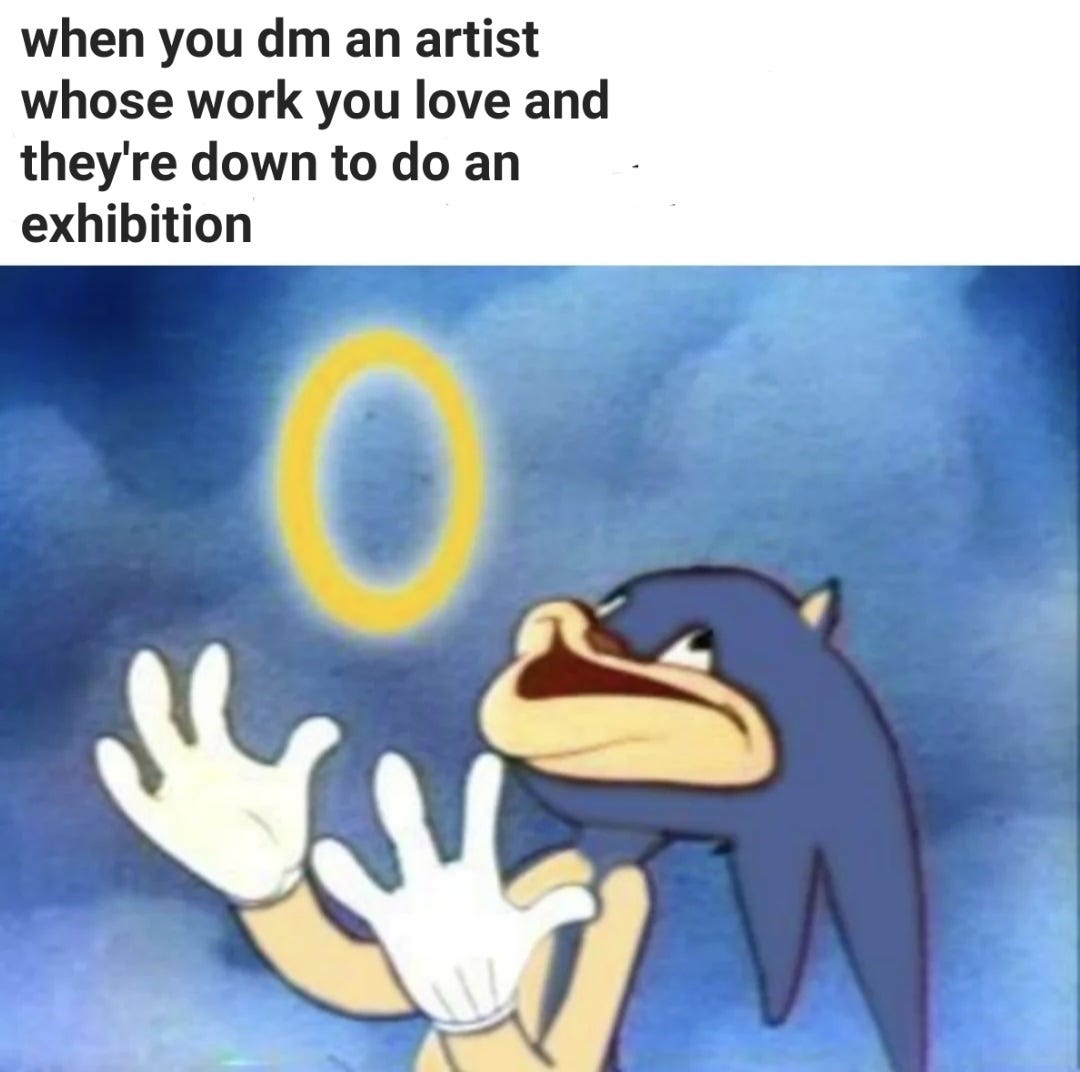
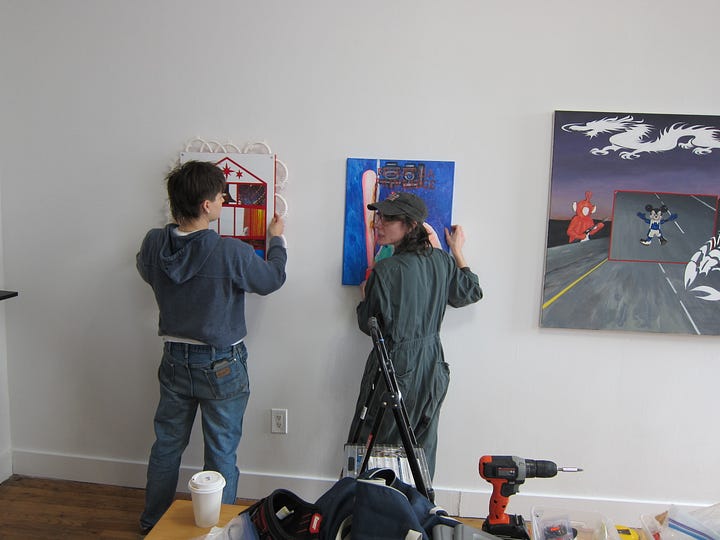
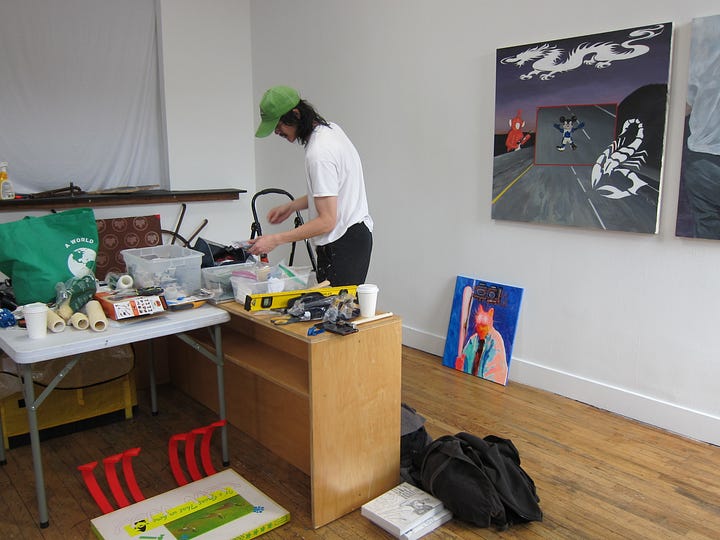
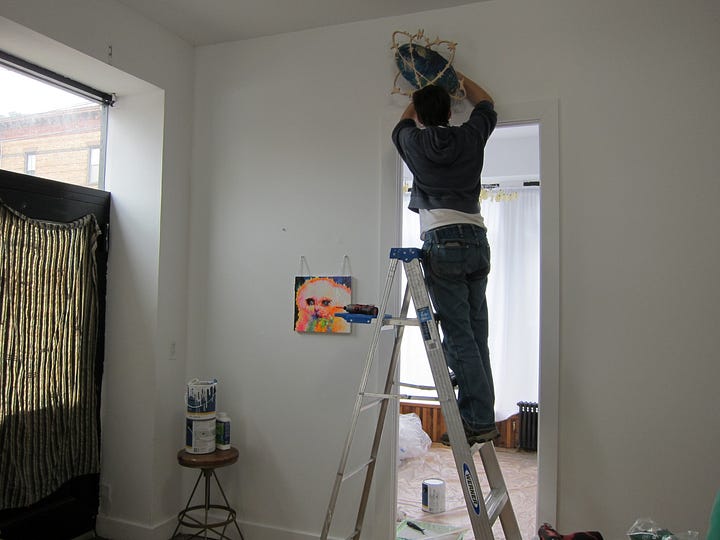

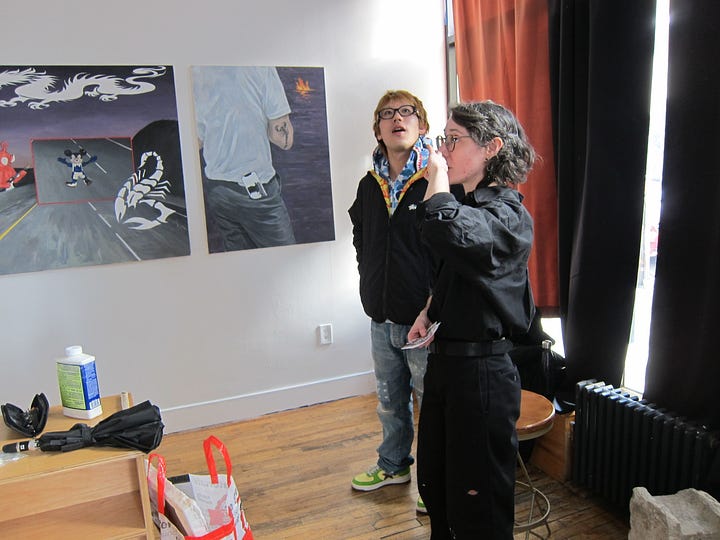


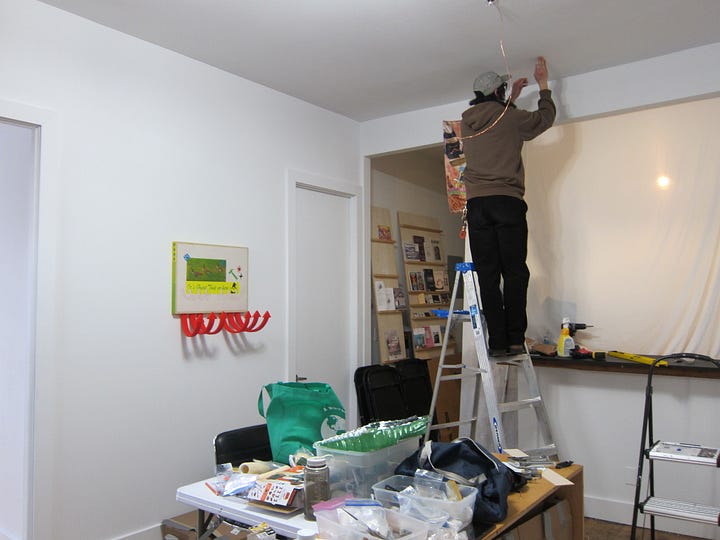
It also helped that I have a collaborative and artist-centered curatorial practice, and occasionally get my shit done, because Austin and Jerome were very hands on for this whole process, which I actually really appreciated. The install was collaborative between myself, Austin, and Victoria (who also curates outside of her artistic practice), but I will say Victoria made things difficult for me by creating a bunch of super incredible, but large, new work that I wasn’t 100% sure how to fit into the space lol.
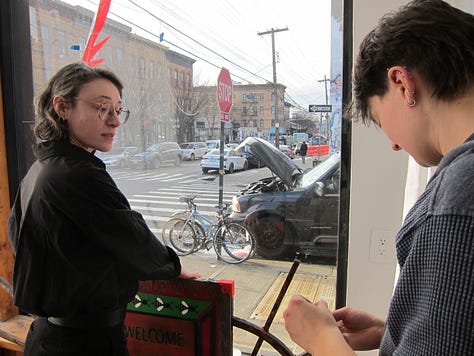
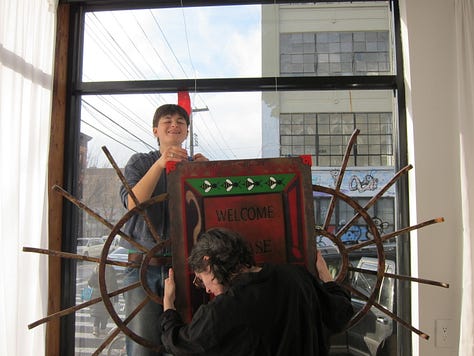
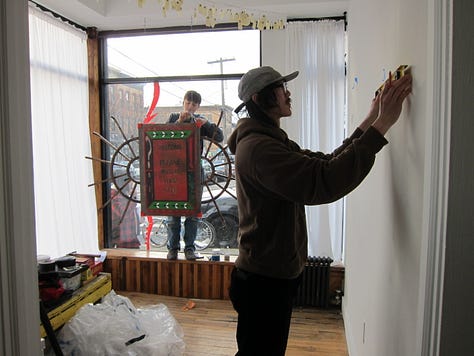
I was also especially moved by how collaborative and hands-on everyone was because I was literally a huge fucking mess from my breakup which totally blindsided me and was finalized less than a week before the opening, which fell on Valentine’s Day lmao. So I decided to be a bit of a troll going for a Valentine’s Day themed opening reception, thinking about digital camp aesthetics (I still can’t believe ya’ll ate those conversation hearts lol), made some goofy marketing to match, and made sure to have some especially campy decorations. I also made sure to look mega fucking hot because every moment I wasn’t working on this project, I was a mess, but I wasn’t going to let that stop me from this meta-performative project I have going on as a queer curator which is being a dumb hot bitch.

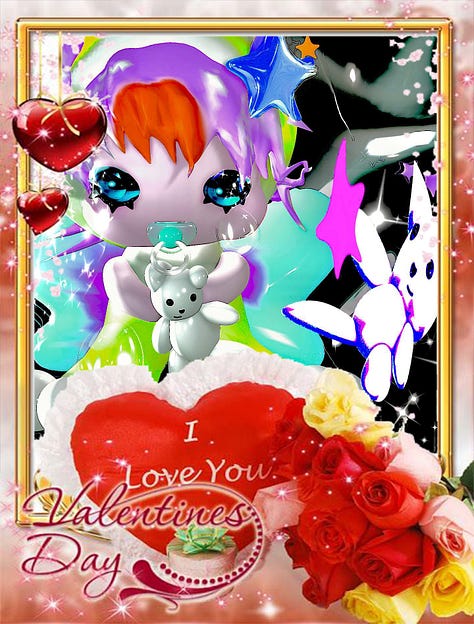
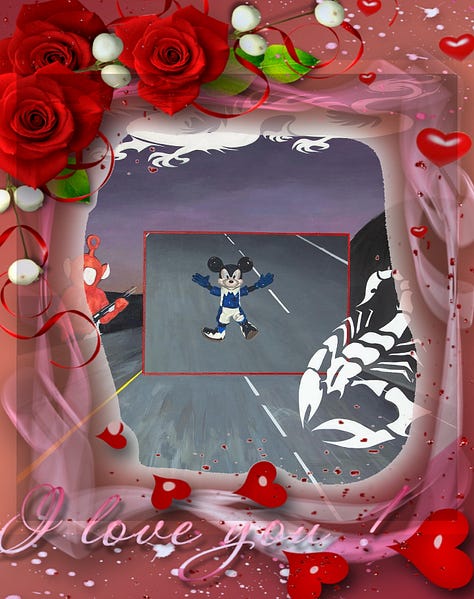

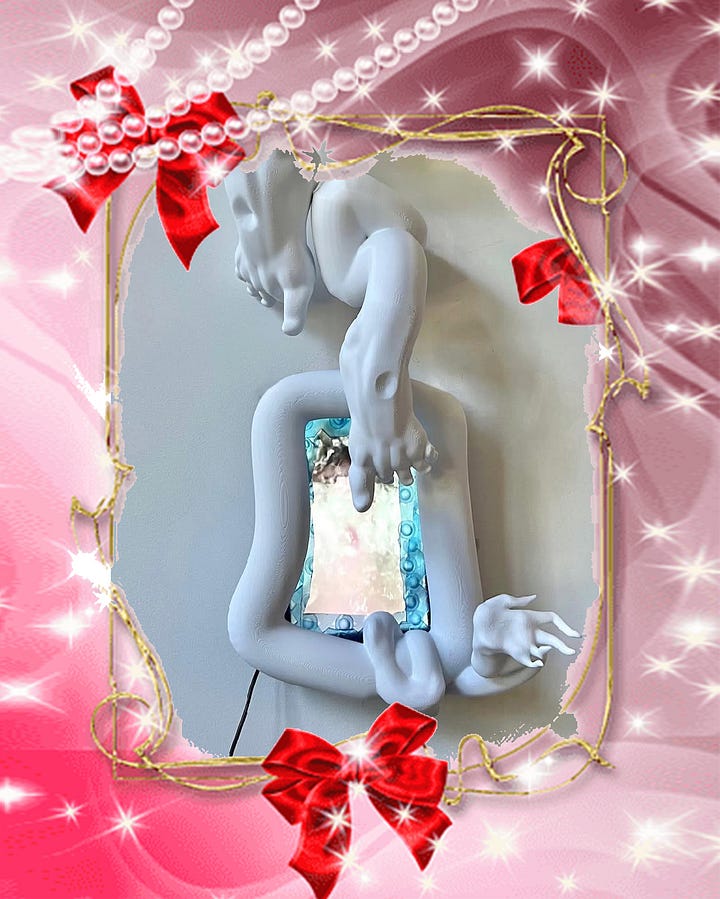

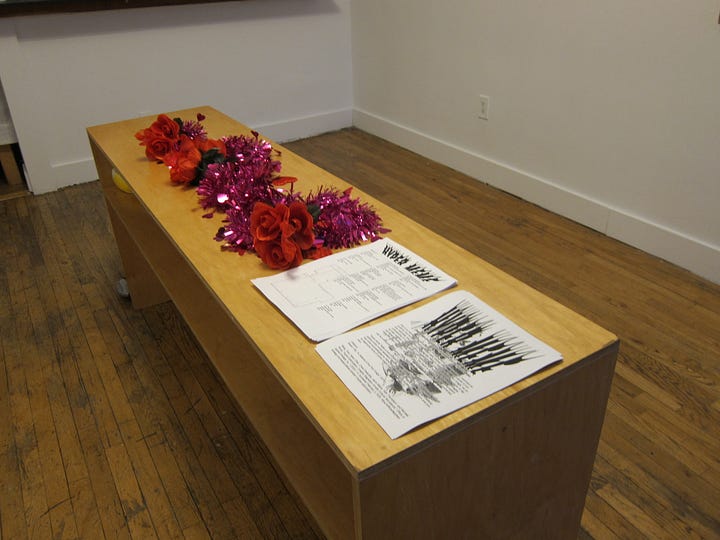

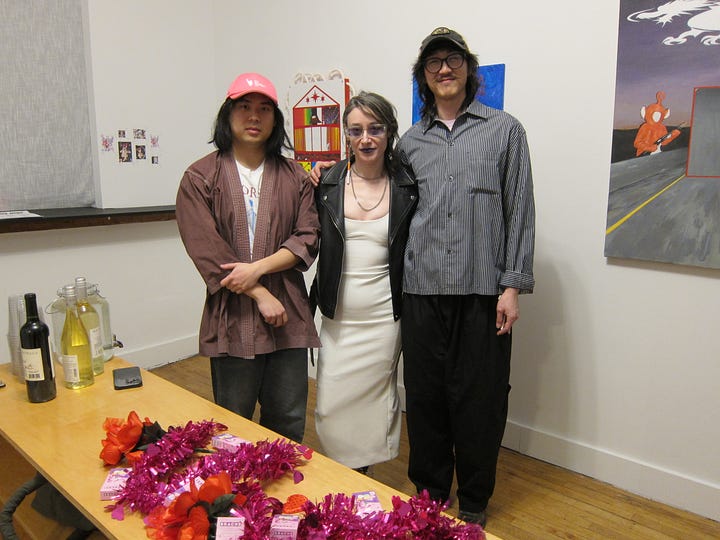
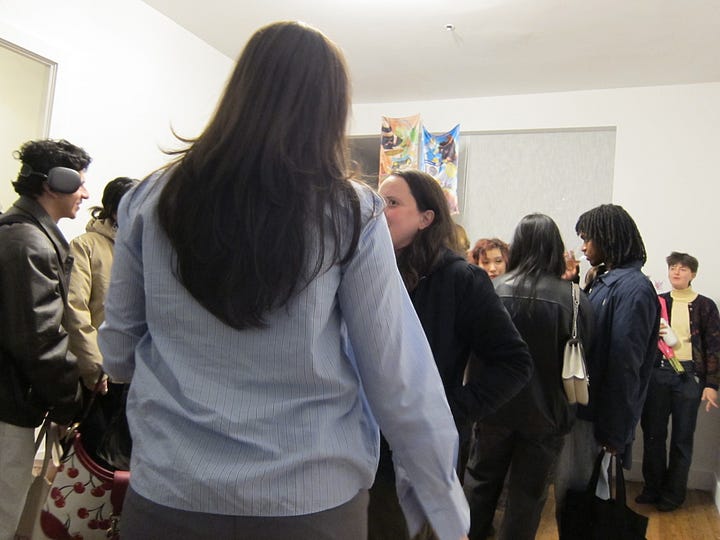
Due to my breakup though, I was in an advantageous position to guilt everyone into going to the opening on Valentine’s Day because my ass was single. I also genuinely needed some community support. So shout-out to all the artists, the space directors, my professional contacts, my friends, and random visitors whom I hadn’t met previously, ya’ll really got me through this, and tbh the show looked great and the whole experience of making this happen was honestly such a balm on my soul. Love you guys 💗💗💗
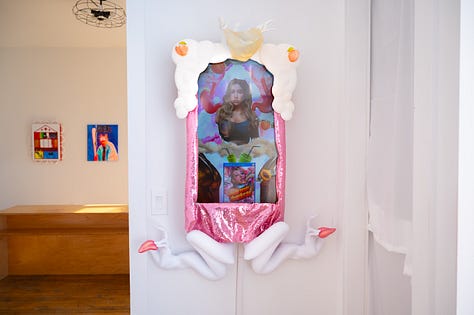
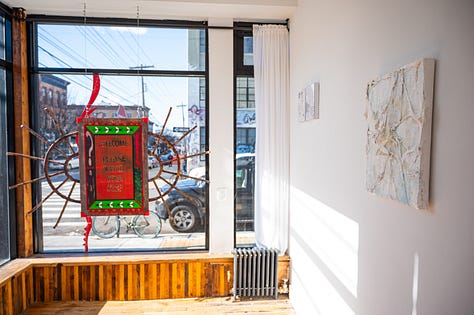
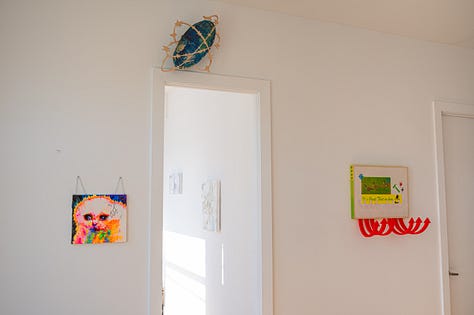

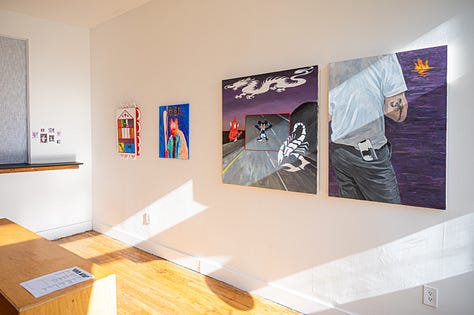
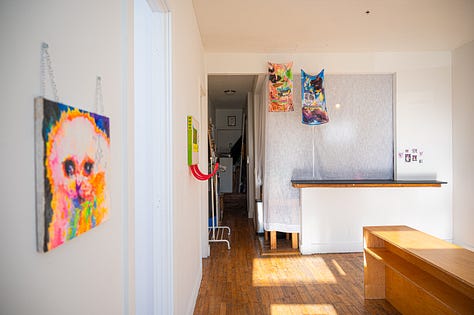
What came up in the process of building this show, for me, was considering our generational relationship to images. I spent some time discussing with the artists, space directors, visitors, etc etc how it’s ultimately because of Gen Z that earlier web aesthetics became revived as a digital style, making it all the more hilarious when I realized Ash was also a millennial. We both discussed how Gen Z viewers respond more strongly to our work because not only are they performing millennial digital nostalgia, but they’ve had access to the internet since way earlier in their lives (like I actually just used to play outside as a kid lol). Ash’s work addresses wellness culture online and performing fit girl aesthetics, while Victoria’s utilizes a kind of aesthetic framing that seems informed by tumblr image grids and webcore aesthetics, but through those mediums, is actually talking about placeness and local histories. I liked how, because we installed one of Victoria’s works on the window, and it was based on the idea of a fence, through Victoria’s work, you could view Ash’s piece, which was the only piece of true new media work in the exhibition. The dialogue between the works emphasized both how the artists approached their post-internet practice, and also created a nice contrast between interiority and exteriority.
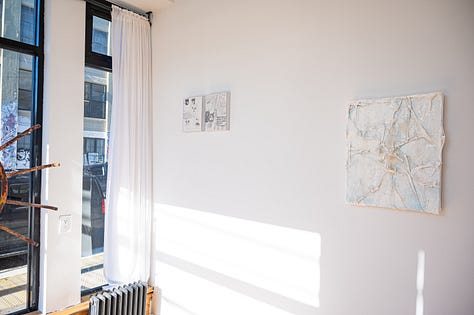
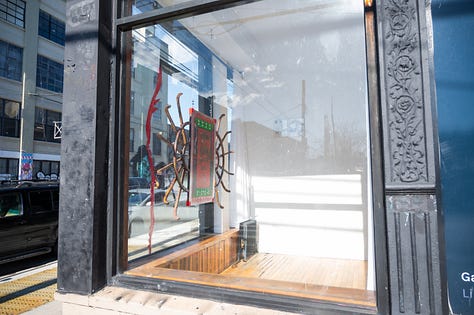
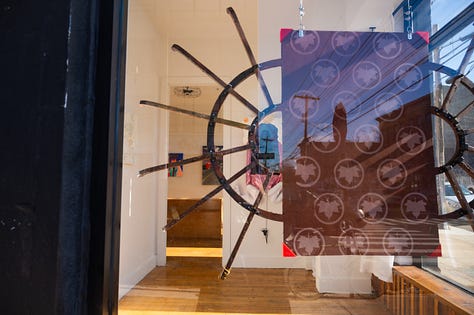
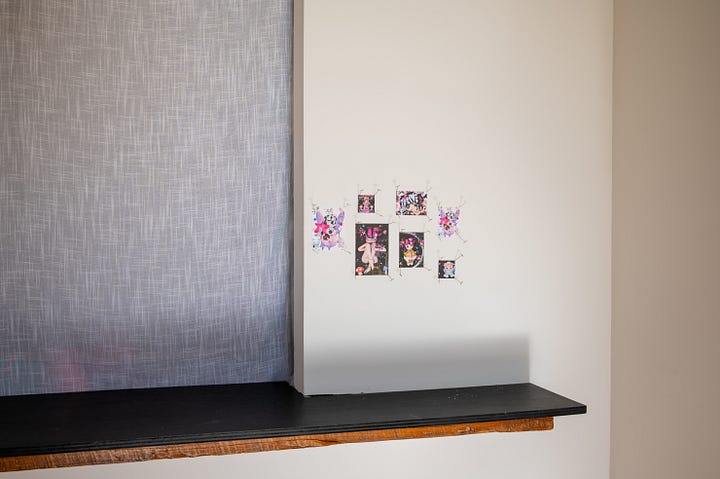

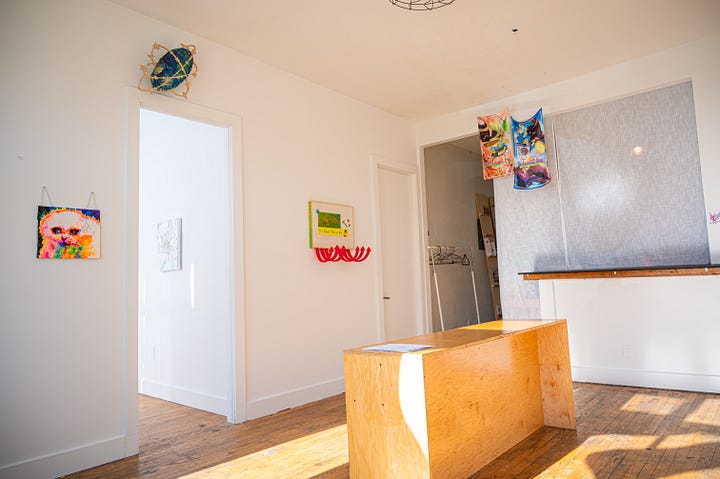
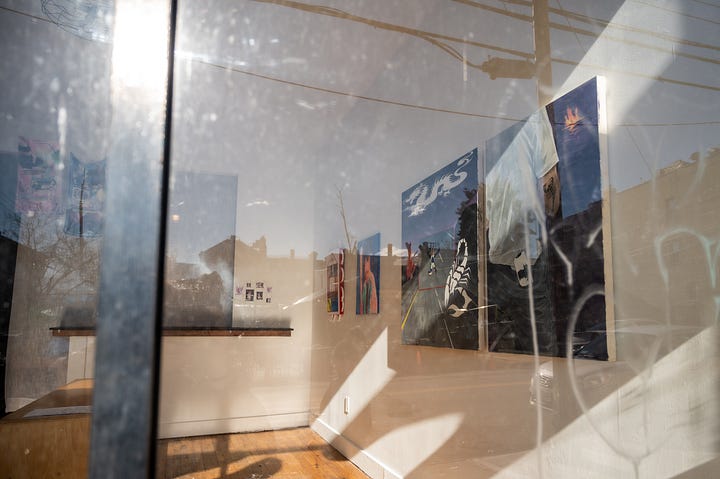
Tong’s work addressed gendered expectations on Chinese women and girls, and how this impacted how they related to the people around them, while Li’s work thinks of memes within the context of Chinese pop culture and what it means to build images that function as self-defense using online images and web aesthetics. My works were all of the cat memes, obviously, but 후회, in particular, had been in an exhibition project curated by Victoria last August, so it was fun to be able to pair our works together for this show; the first time I officially got to curate Victoria.
The exhibition also got published ayeeeeeee. The first published review was from visitor Will Maddox for Two Coats of Paint, calling the exhibition “immaculately funny” and lowkey roasting on less cohesive exhibition concepts. The piece is linked, so definitely give it a read. I don’t disagree with Will on that point, which is why I get hyper-critical as a curator when I’m faced with certain curatorial choices like for example: if the walltext is going to be bullshit anyway, should it at least have to do with all of the art in the show? At a bare minimum, yes. Ideally, the curatorial text is legible in the first place, but I’m not going to pretend that the way I write curatorial texts isn’t also at least partially inaccessible. I’m not trying to be exclusionary, I’m just often citing from REALLY SPECIFIC texts, and having to describe a work of art can itself be a nonsense task left up to curators and art historians, leaving a lot of space for projection and narrativization. Will is also an artist, but not one working with the post-internet, so when I asked them what about the show appealed to them, they mentioned that they just understood the language I was using as someone who was Gen Z. lol. There was a second exhibition review published, but I’m not going to link it because the writer got a lot of things factually wrong about me, the project, and the space, and I find the writer’s style a little bit too heavy-handed aka relying too much on tone and (incorrect) quotations, rather than any actual analysis. Like if you wanna roast me, go ahead, but please, at least, quote me correctly. The only other feedback I received was calling the show “overcrowded”, which I don’t disagree with, but I did what I could given the conditions I had, which is an open call to give me money to produce more ambitious shows, obviously.
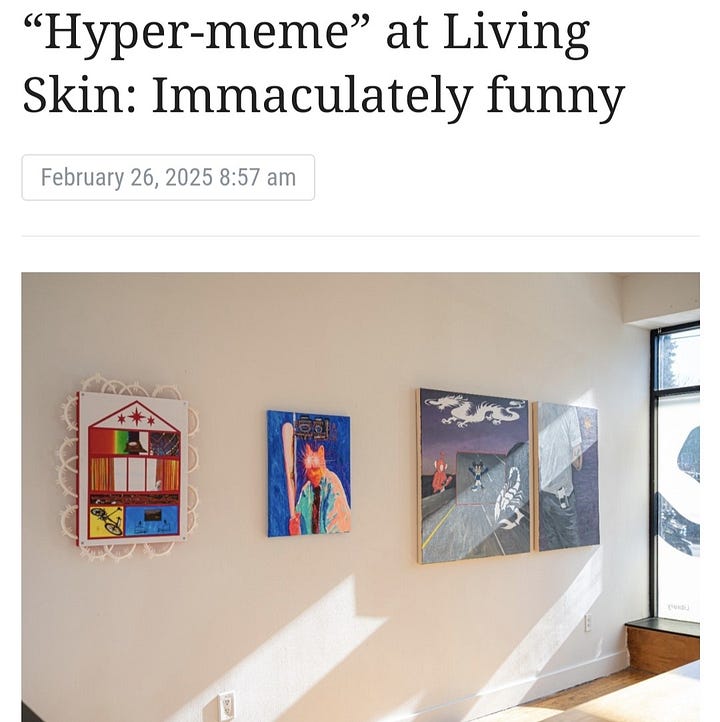

My statement for this exhibition was kind of buzzwordy (sorry at my Columbia writing prof, I know you’d personally be disappointed in me), but generally speaking, I was writing a text in alignment with Hyper-optimization while also acknowledging that it was written from a pretty cis-heteronormative (and Western) experience of the internet, which serves as the framework for its criticisms. I also wrote it in like 5 minutes. You can read my statement below:
“Due to our exponentially optimized state through cultural over-abundance, improved algorithms, and increasingly self-referential data, memes exist as part and parcel of culture, nationality, and linguistics. Despite Hito Steyelr’s “Defense of the Poor Image” as an understanding of culture and communication through image degradation as signs of digital wear and tear, creating iterative and meta-language systems, that no new images are being generated is cause for concern. The result is stagnation, over-consumption under late-stage capitalism, and waste (psychological, economic, and environmental) while creating ever-expanding conditions for what constitutes culture, eliminating friction and its subsequent development of counterculture.
“Hyper-meme” takes a look at these images as archetypes that pervade macro-cultural spaces online; tumblr aesthetics, webcore, post-gender avatars, and post-meme art that, while acknowledging our hyper-optimized and post-digital state of being, challenges hegemonic forms of online image-making and identity-building through form and process.
Citations:
Steyerl, Hito. “In Defense of the Poor Image.” (2015).
Wang, Tony, Helen Chen, Chloe Desaulles, Joyce Matos, Seth Thompson, and Michael Yeung. "Hyper-Optimization; Creative Stagnation Amidst Cultural Abundance." Office of Applied Strategy, no. 1 (2024): 1-5. Accessed February 3, 2025. https://officeofappliedstrategy.com/research#oas-dossier-1-hyper-optimization.”
So what did that even mean, right? I’m acknowledging that due to algorithmic flattening, there are just fewer diverse types of content online, and of what remains, it’s pretty iterative. But I also don’t agree that that’s entirely the case, and the exhibition represents evidence to the contrary. I think it also allows viewers in terms of how they relate to the image online, to reflect on their own experiences, which again, really varies depending on their age, their primary language, their nationality, sexuality, gender, able-bodiness, race… just so many things, so many lenses, so many unique perspectives and experiences that while a text like Hyper-optimization doesn’t really get into, something like Glitch Feminism does. That’s not to say Hyper-optimization doesn’t have merit, because I don’t think that’s the case at all, and what I think it really brings to the table is understanding how systems limit our choices and our ability to connect and generate new sociological models for culture, research, and genuine human play.

As an aside: I had to create that citation for Hyper-optimization manually, which took me an embarrassingly long amount of time. So this lays a lot of the foundation for the who, what, when, why, and how of how all of this came together, but since it’s already pretty long, I’ll save my reflections on my curatorial walkthrough and panel discussion, and how all of this programming served as a nexus for me at this point, for part 2. xoxo.



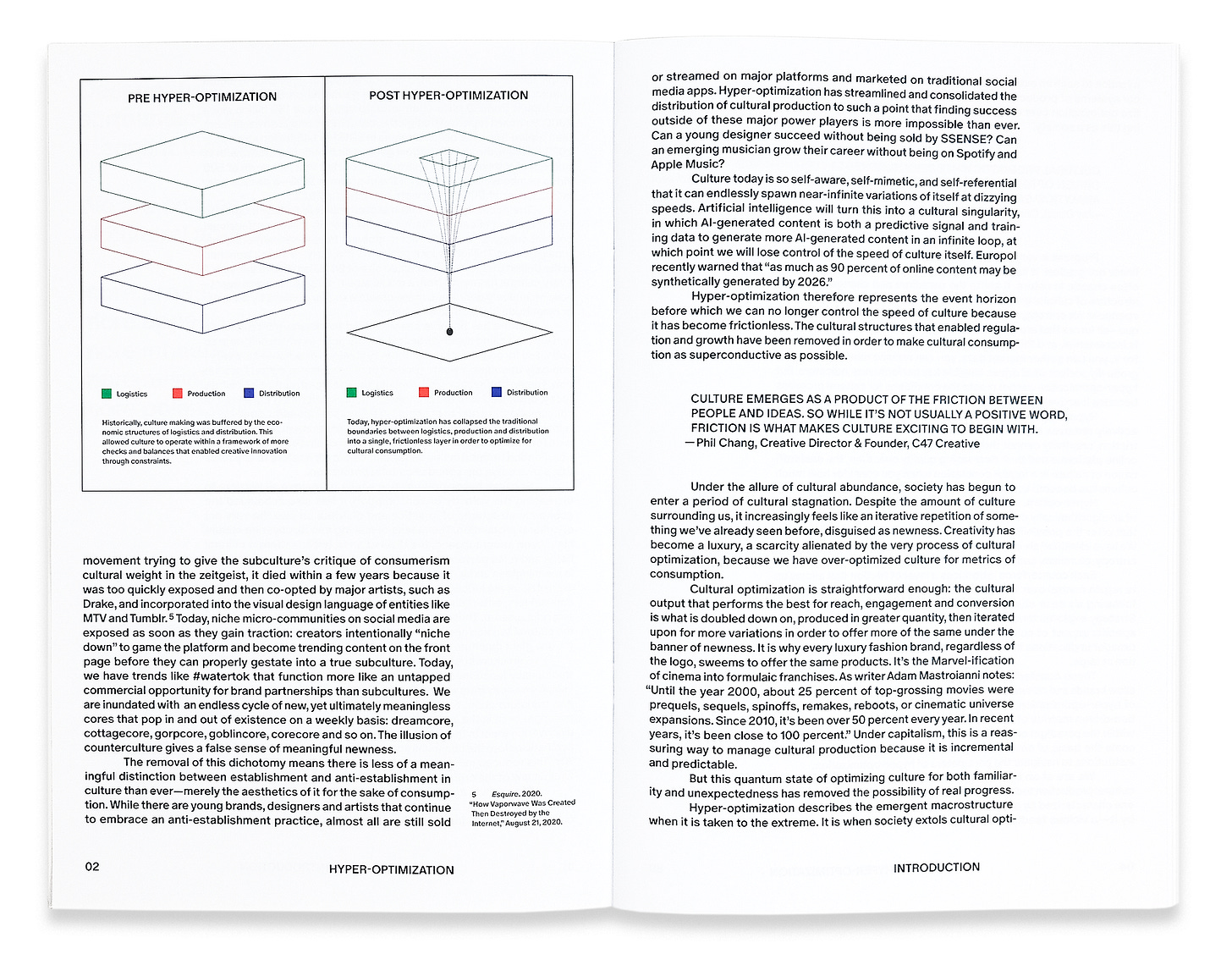
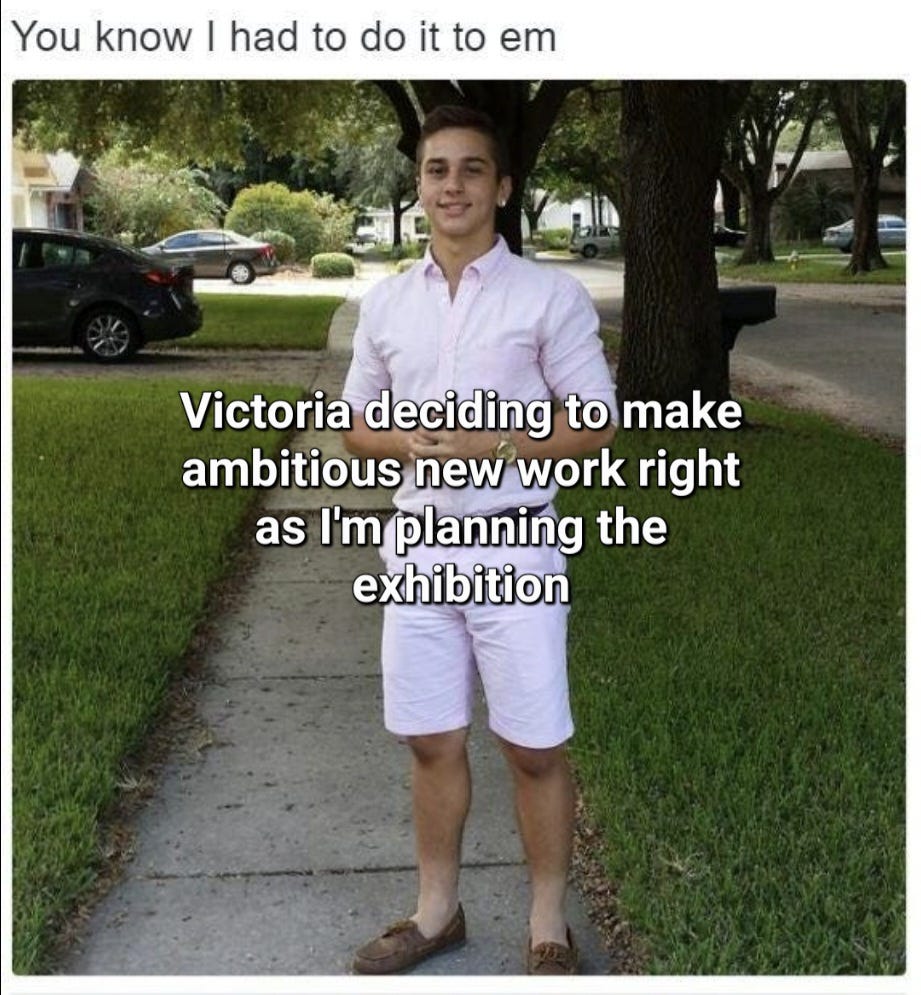
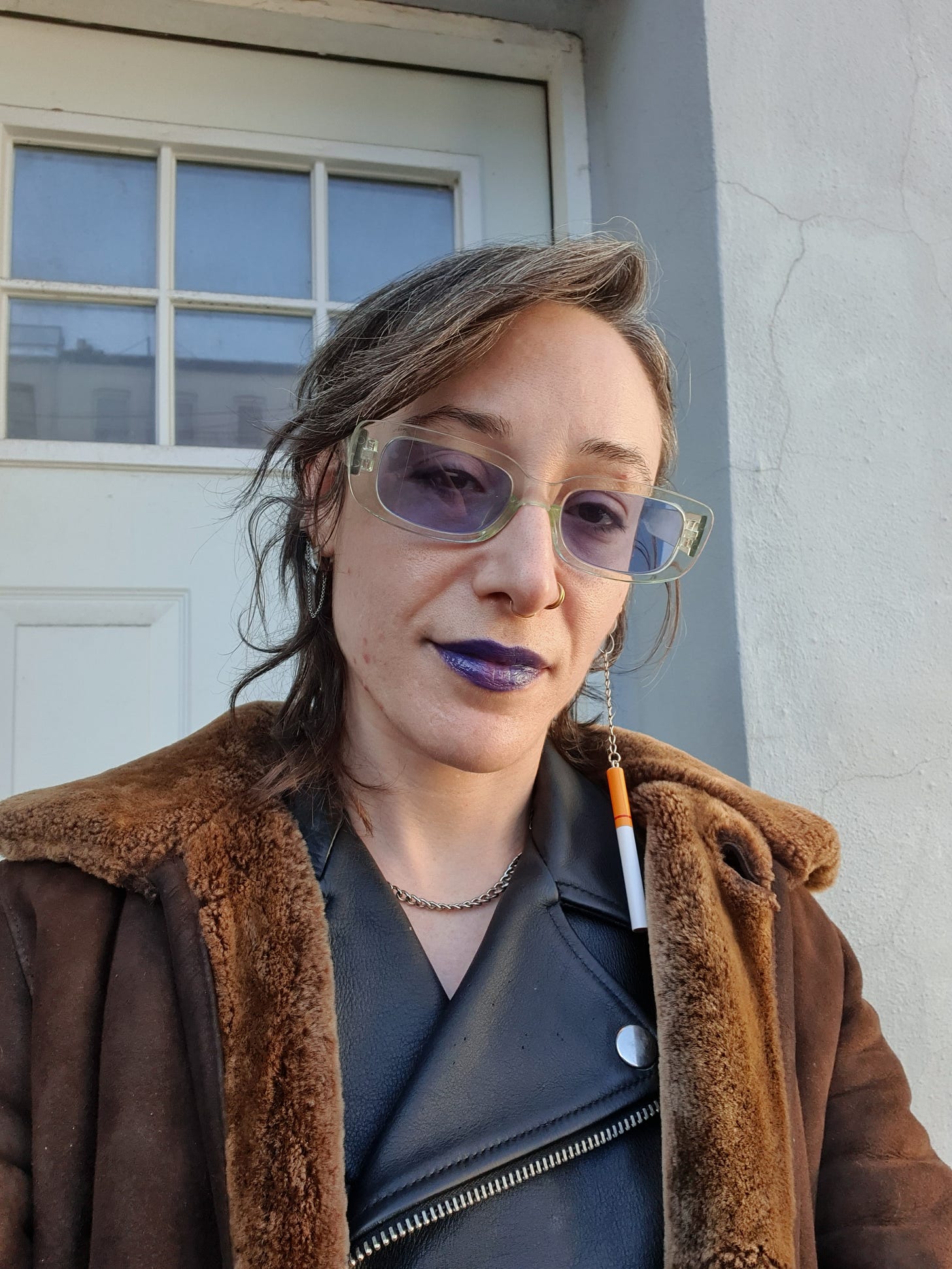
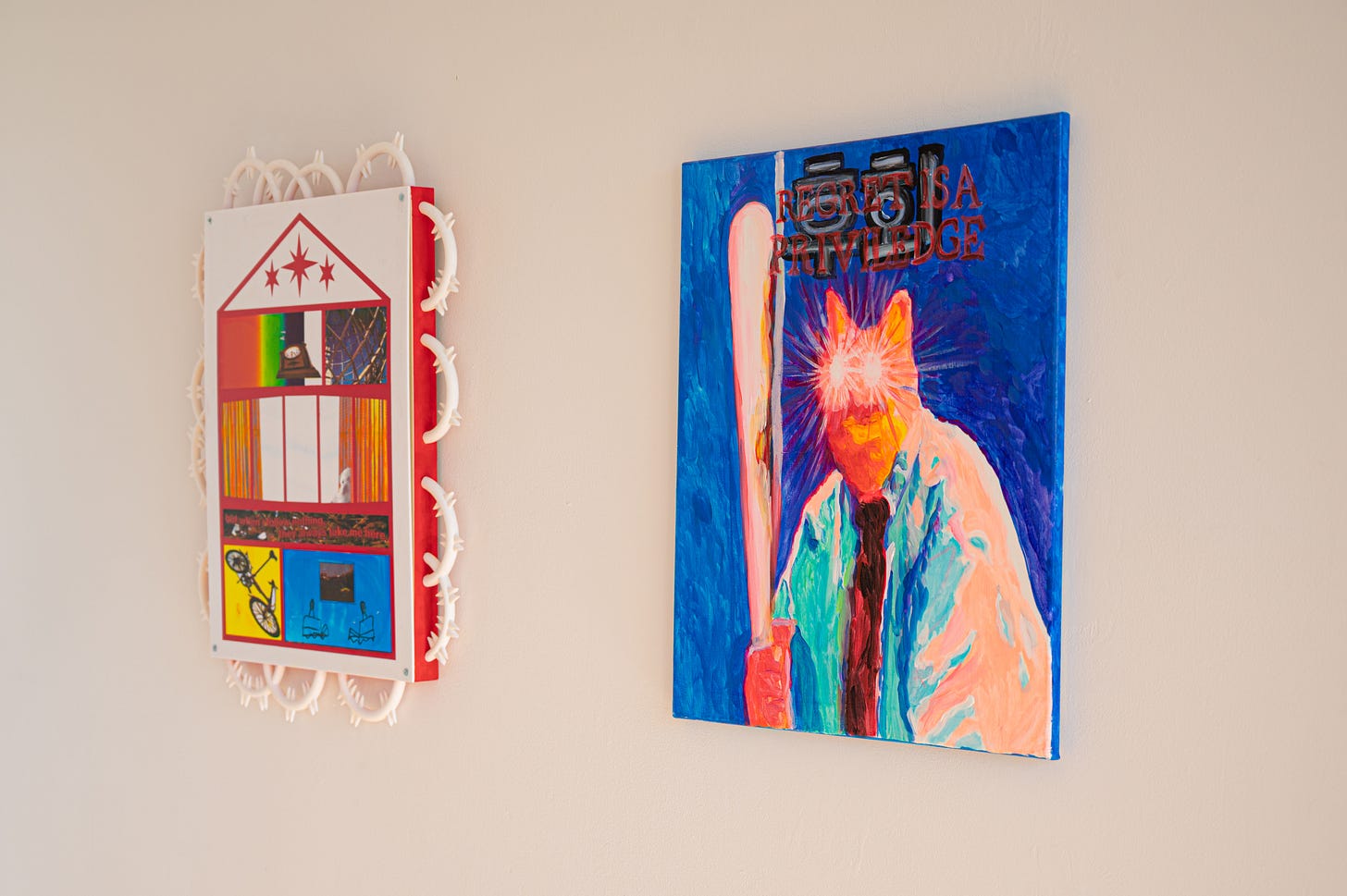
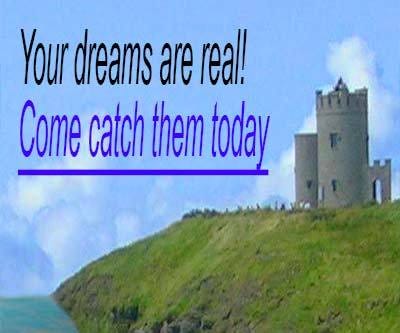
HASHTAG BAE MODE 😍😍😍😍😍